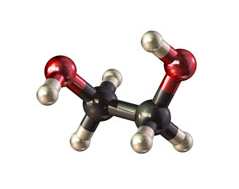The Business of Glycol Recycling
January 7, 2014
It’s time to tell the story of the glycol recycling business. The 21st century version of it, that is. It provides a real-life look at the benefits and challenges of green chemistry. And as the English used to say, it’s a ripping good read.
We can hear the chorus now, “Oh, please, antifreeze and polyester?!” If you think that it’s not a sexy story, you’re right. But it says a lot about current business and technology.
Why Glycol? Why now?
The technology and business of glycol manufacturing is changing. Glycol recycling now presents a viable production alternative to production from raw materials. Mostly in Europe but recently in the U.S. and elsewhere, attitudes on and methods of green chemistry are maturing into workable standards and regulations. Glycol recycling is a positive example of changing technology and attitudes that can lead to a cleaner environment and new business opportunities.
The Glycol Recycling Story Is About...Using technology to solve environmental problems Business opportunity and changing markets Successful use of green chemistry ideas and standards |
Making Distributing and Using Glycols
We could start by pelting you with factoids guaranteed to make your eyes glaze over. Instead, let’s start at the very beginning, with raw materials and the triple-bottom-line.
The triple bottom line is much more than a fashionable buzzword. It provides an easy-to-follow way to identify and track resource requirements, environmental impacts and various types of value created by glycol production and recycling.
Glycol Manufacturing Process
Triple bottom line analysis makes it plain where value to businesses and the environment occur. All we have to do is look at glycol production from virgin inputs as the alternative to the recycling process.
The natural gas-glycol production chain is a good example of how useful the triple bottom line approach can be. A simple look at the glycol production chain concentrates only on products made in each step:
But adding other inputs, process steps and effluents give a more revealing—and accurate—look at glycol production from a comprehensive, end-to-end perspective.
Next Time: We start the glycol story by taking a detailed look at commercial glycol products, how they are made and what their sustainability quotient looks like when measured by triple bottom line criteria.
The future can be cleaner.
At GlyEco, we believe providing information about chemistry-based pollution solutions is good for both the environment and your mind. Our team is dedicated to creating a future with less dirty glycol going to waste. It's a big job... and we are up to the challenge. Using our breakthrough technology, we clean all types of waste glycol, help safeguard the environment and create valuable green products.









